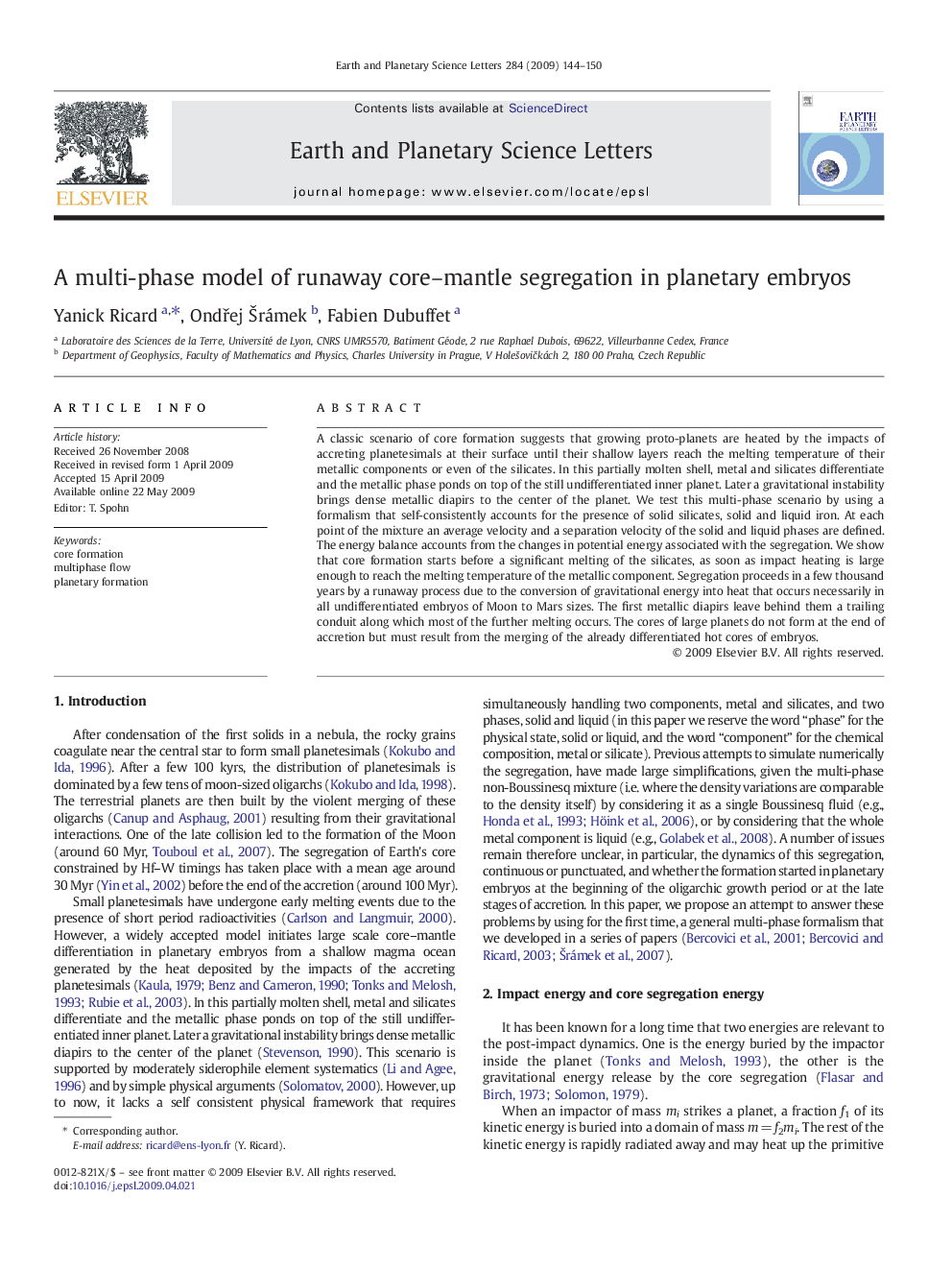| کد مقاله | کد نشریه | سال انتشار | مقاله انگلیسی | نسخه تمام متن |
|---|---|---|---|---|
| 4679206 | 1634871 | 2009 | 7 صفحه PDF | دانلود رایگان |

A classic scenario of core formation suggests that growing proto-planets are heated by the impacts of accreting planetesimals at their surface until their shallow layers reach the melting temperature of their metallic components or even of the silicates. In this partially molten shell, metal and silicates differentiate and the metallic phase ponds on top of the still undifferentiated inner planet. Later a gravitational instability brings dense metallic diapirs to the center of the planet. We test this multi-phase scenario by using a formalism that self-consistently accounts for the presence of solid silicates, solid and liquid iron. At each point of the mixture an average velocity and a separation velocity of the solid and liquid phases are defined. The energy balance accounts from the changes in potential energy associated with the segregation. We show that core formation starts before a significant melting of the silicates, as soon as impact heating is large enough to reach the melting temperature of the metallic component. Segregation proceeds in a few thousand years by a runaway process due to the conversion of gravitational energy into heat that occurs necessarily in all undifferentiated embryos of Moon to Mars sizes. The first metallic diapirs leave behind them a trailing conduit along which most of the further melting occurs. The cores of large planets do not form at the end of accretion but must result from the merging of the already differentiated hot cores of embryos.
Journal: Earth and Planetary Science Letters - Volume 284, Issues 1–2, 30 June 2009, Pages 144–150